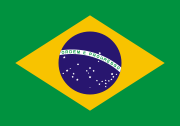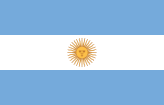Santa Cruz de la Sierra
| Santa Cruz de la Sierra Santa Cruz |
|||
|---|---|---|---|
 |
|||
|
|||
|
|
|||
 Santa Cruz de la Sierra
|
|||
| Coordinates: | |||
| Country | |||
| Department | Santa Cruz | ||
| Province | Andrés Ibáñez | ||
| Founded | February 26, 1561 | ||
| Government | |||
| - Mayor | Percy Fernandez | ||
| Area | |||
| - City | 325.57 km2 (125.7 sq mi) | ||
| Elevation | 416 m (1,365 ft) | ||
| Population (2009)[1] | |||
| - City | 1,594,926 | ||
| - Density | 4,215.24/km2 (10,917.4/sq mi) | ||
| - Urban | 1,545,161 | ||
| - Metro | 1,862,911(includes neighbouring municipality of Cotoca) | ||
| Time zone | UTC-4 | ||
| Website | http://www.gmsantacruz.gov.bo/ | ||
Santa Cruz de la Sierra, commonly known as Santa Cruz, is the capital city of the Santa Cruz department in eastern Bolivia. The municipality's population was 1,528,683 inhabitants in 2006 (official estimate[2]) and the urban population is 1,545,161 in 2008 (official estimate)[3] which makes it the largest city in Bolivia.
Contents |
History


Santa Cruz de la Sierra was founded on February 26, 1561 by Ñuflo de Chávez who gave the new settlement its name, which means "Holy Cross of the Hills," in honor of his beloved native city in Extremadura, Spain. Nuflo de Chávez was a Spanish captain whose biggest legacy was the expansion of colonization through virgin rainforest and savanna areas in southeastern South America. His campaign started in Buenos Aires - then Argentina's capital city - to the second biggest settlement, Asunción - then Paraguay's capital city - and finishing with the last of the larger settlements, Santa Cruz de la Sierra.
Each of the three cities helped to consolidate the colonization of several indigenous populations through what was named as Audiencia de La Plata, a type of administrative province during the colonial stage of Latin America's history. The Audiencia de La Plata consolidated what today is Argentina, Uruguay, the three Southern states of Brazil, Paraguay, and the south, southeast, and north of Bolivia, inclusively the state of Acre which is currently part of the Brazilian Federation. Santa Cruz is the largest city in Bolivia.
Within the specific area of Santa Cruz de la Sierra, several tribes were incorporated under Spaniard control and converted to the Catholic faith, as a result of the Jesuits' influence over this region; the Guaranies, Moxeños, Chiquitanos, Guarayos, and Chiriguanos were just a few of several ethnic groups who were the ancestors of the racially mixed population of the modern Santa Cruz, Beni, Pando, and Tarija departamentos (states) of Bolivia.

The original settlement of Santa Cruz de la Sierra was actually 220 km east of its modern location, only a few kilometers south of today's San José de Chiquitos. After conflicts with the indigenous population, the town was moved to another location closer to the banks of Río Grande; as a result of unfriendly environmental conditions, however the city of Santa Cruz de la Sierra was then moved to its present location on the banks of Piraí River in 1592. Remnants of the original settlement can be visited in Santa Cruz la Vieja ("Old Santa Cruz"), an archeological site south of San José de Chiquitos. It is commonly believed there were more than two relocations of the city between February 26, 1561 and the year when the last settlement was finally founded, but this is still not known for certain.
The first settlers of Santa Cruz were mainly Spaniards that accompanied Ñuflo de Chávez, as well as Guarani natives from Paraguay, and some Flemings, Portuguese, Germans and Italians working for the Spanish crown.[4] Among the first settlers there were also Sephardic Jews[5] recently converted to Christianity who were persecuted in by the inquisition in Spain.

After the city was moved, it became an important staging point for Jesuit and other Christian missions to Chiquitos and Moxos for the next two centuries. Still, Santa Cruz saw little growth during that period of time. It was not until nearly a century after Bolivia gained its independence that the city started to take an important role in the nation's history. The Acre war with Brazil in the early 20th century, as well the Chaco war with Paraguay in the 1930s, forced the central government to turn its attention to the east, allocating more resources for regional governments and improving communication. The isolated town was connected by a road to Cochabamba in the 1950s, and subsequently to Brazil by railway, thus stimulating economic and demographic growth. Improvement in routes and pathways of communication, such as Viru Viru International Airport, as well as a continuous influx of immigrants, turned the city into one of the most industrialized and important trading centers of the country during the second half of the 20th century.
Today Santa Cruz is not only the most populated city in Bolivia, but the department is also the richest, with over 30% of the national GDP.
Geography

The city of Santa Cruz de la Sierra is located in the eastern part of Bolivia (17°45', South, 63°14', West) at 416 m above sea level. It is part of the province of Andrés Ibáñez and the capital of the department of Santa Cruz.
Climate
The weather is tropical savana, with an average annual temperature around 21 °C (or 70 °F). Although the weather is generally warm all year round, cold wind patterns, called "surazos", can blow in occasionally (especially in the winter) from the Argentine pampas making the temperature drop considerably. The months of greatest rainfall are January and February.
| Spring | Summer | Autumn | Winter |
|---|---|---|---|
| 18 °C– 33 °C 64°F–91 °F |
22 °C–38 °C 72 °F–100 °F |
20 °C–30 °C 68 °F–86 °F |
8 °C–29 °C 46 °F–84 °F |
| 21 Sep - 20 Dec | 21 Dec - 20 Mar | 21 Mar - 20 Jun | 21 Jun - 20 Sep |
Warm subtropical; the average temperature is 23.4 ° C, average humidity 68%. The months of heaviest rainfall are January and February.
Culture and Food

The city of Santa Cruz has benefited from a fast paced growing economy for the last 15 years. This has allowed for a multicultural and ethnically diverse city to develop. Despite its fast growth, the city preserves much of its traditions and culture. This is particularly reflected in its typical foods.
The Spaniards introduced cows, poultry, rice, citrus fruits (oranges, tangerines and lemons), from southern Asia they brought sugar cane and from Africa plantains, bananas and coffee (which is cultivated in the yungas near Buena Vista. Moreover, local dishes include native vegetables such as corn, peanuts, yuca and squash, and also local fish such as surubi and pacu.
There is evidence of the influence of Jewish kosher cuisine in many traditional Santa Cruz dishes,[6] where it is noticeable, the general absence of pork meat, and the combination of rice, yuca, corn and peanuts with either meat or milk products, but never both (at least while being cooked).
Native spices such as urucum, and native fruits (unique to the region) such as achachairu, guapuru and guabira, add to the uniqueness of Santa Cruz rich traditional cuisine.The agricultural richness of the region allows Santa Cruz to enjoy a vast variety of flavours and ingredients. The following is a list which describes the most typical foods:
Typical Foods
- Majao or Majadito (a risotto style plate which includes charque, duck or chicken meat.)
- Locro (a very dense, rice and hen based soup containing potatoes and spiced with onion, garlic and oregano. It's common to use chicken instead of hen and it is eaten with a piece of boiled yuca) Not to be confused with an Argentinean typical food
- Masaco (smashed plantain with charque(sun dried meat)Also made with yuca and charque)
Typical Drinks
- Mocochinchi (drink consist of sun dried peaches which are boiled with honey and clove, served cold)
- Somó (white corn based drink, served cold as a refreshment)
- Chicha (non-alcoholic drink made by mixing white corn and cinnamon, very sweet).
Typical Pastries
- Cuñapé (yuca and cheese baked as small bread bunds)
- Zonzo (yuca and cheese, boiled and mixed in a type of mashed potato consistency, oven baked or grilled)
- Empanada de arroz
- Empanada de queso
- Empanada de jigote
- Empanada de carne
- Bizcocho de trigo
- Masaco de plátano
- Masaco de yuca
- Arepa
- Queque
Economy
The airline AeroSur has its headquarters in Santa Cruz.[7]
Additional Notes of Interest


- The city's street layout currently consists of a concentric ring model.
- There are several Japanese-manufactured taxi cabs throughout the city. The steering wheels have been modified to the left side of these vehicles, thus earning them the name of "transformers" (transformed).
- The Spanish language of Bolivia's eastern lowlands (the departments of Santa Cruz, Beni, Pando) is referred to as "Cambañol". Aside from local idioms and vernacular, the distinctive, phonological traits of the Cambañol include using the "j" instead of the "s" (similar to Caribbean Spanish mixed with Argentine Spanish) and the use of the voseo pronoun instead of tú in informal address. The use of vos is spoken also with frequency within the departments of Tarija, Beni, Pando.
- Santa Cruz de la Sierra is a major fashion and modeling hub in Bolivia. Cruceños pride themselves in winning the most Bolivian beauty pageant titles, including the Miss Bolivia pageant whose delegate continues her representation at the Miss Universe pageant. For this reason, Cruceños colloquially honor their city as "La Capital de la Belleza Amazónica" ("The Capital of the Amazon Beauty"), even though it is not located in the Amazon forest. Nationally, Cruceños spend the highest amount of money per capita on personal care and beauty products.
- The city is home to Palmasola prison
Sister cities
 Campinas, Brazil
Campinas, Brazil Córdoba, Argentina
Córdoba, Argentina Miami Dade County, Florida, USA
Miami Dade County, Florida, USA Paraná, Argentina
Paraná, Argentina Rosario, Argentina
Rosario, Argentina Taichung, Taiwan
Taichung, Taiwan Tainan City, Taiwan
Tainan City, Taiwan Santa Cruz de Tenerife, Spain
Santa Cruz de Tenerife, Spain
References
- ↑ "Portal del Municipio Autónomo de Santa Cruz de la Sierra". Gmsantacruz.gov.bo. 2008-12-19. http://www.gmsantacruz.gov.bo/. Retrieved 2010-07-04.
- ↑ "Instituto Nacional de Estadística de Bolivia". Ine.gov.bo. http://www.ine.gov.bo/. Retrieved 2010-07-04.
- ↑ "World Gazetteer". Word-gazetteer.com. http://www.word-gazetteer.com. Retrieved 2010-07-04.
- ↑ Al Margen de mis Lecturas, by Marcelo Terceros Banzer. Published September 1998
- ↑ History of the Jewish People, written by Eli Birnbaum.
- ↑ Article - Storm Clouds Over the Bolivian Refuge: South America's New Pattern of Anti-Semitism, Sherry Mangan, 1952
- ↑ "Contact Information." AeroSur. Retrieved on February 27, 2010.
Further reading
- Gutsch, Jochen-Martin, "Im Labyrinth der Unordnung" Der Spiegel 5 December 2005, pp. 144–50.

